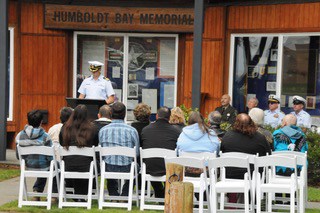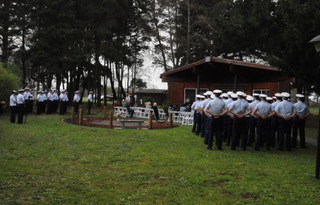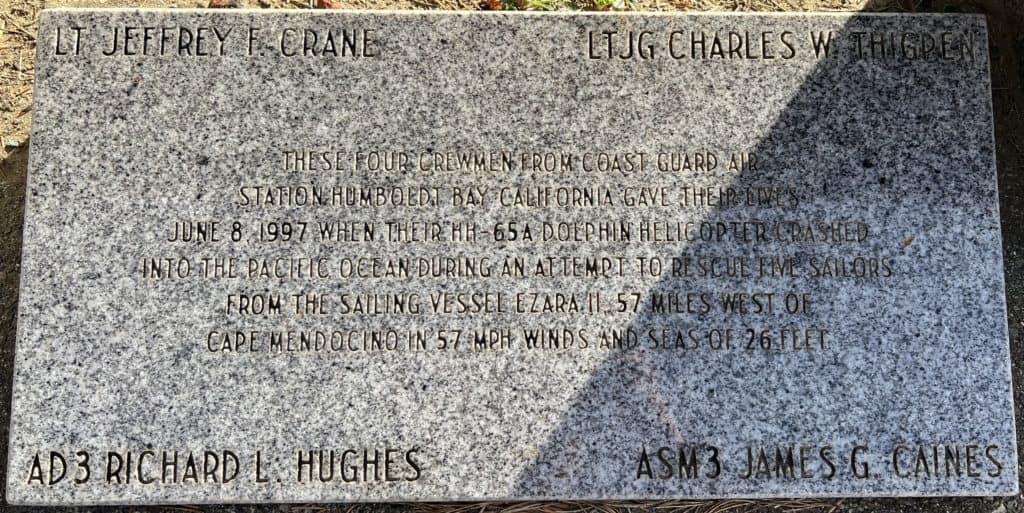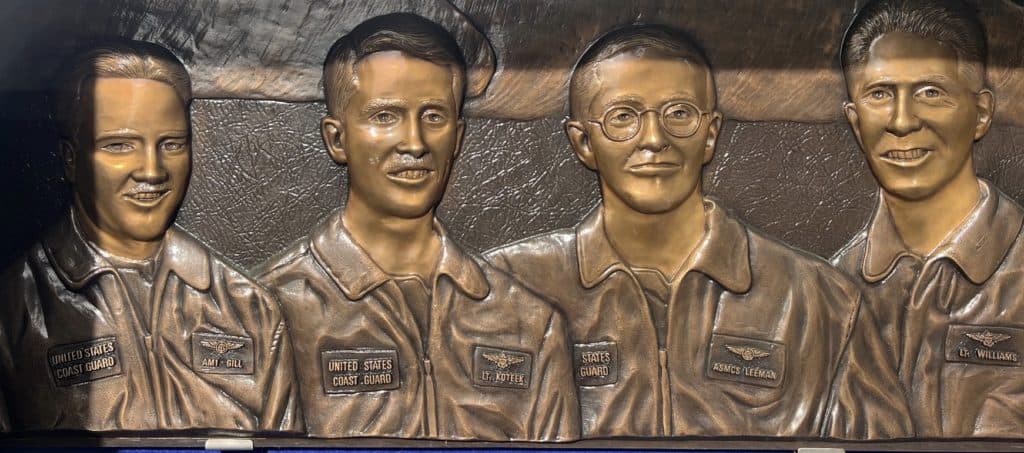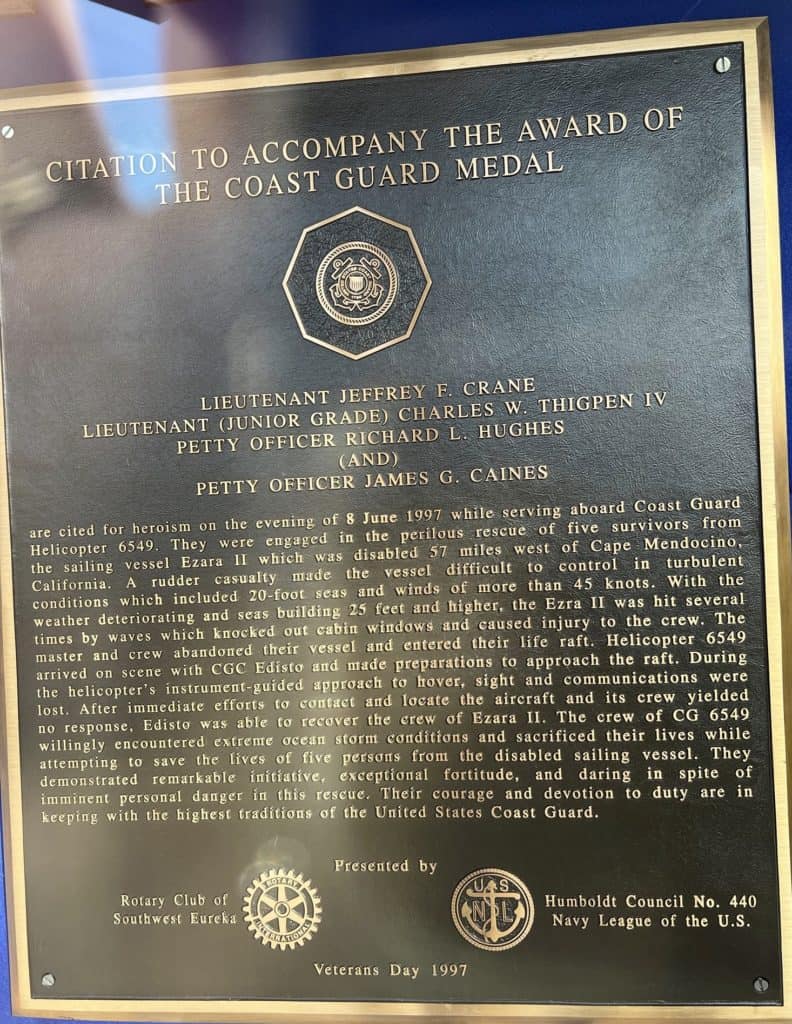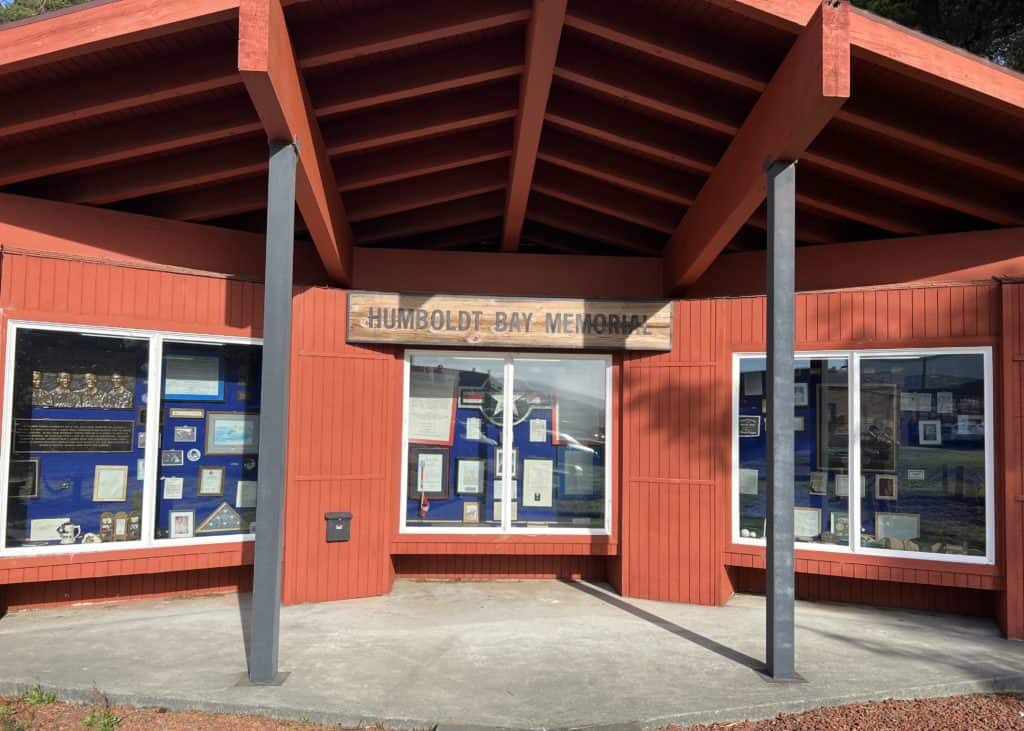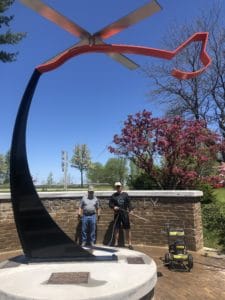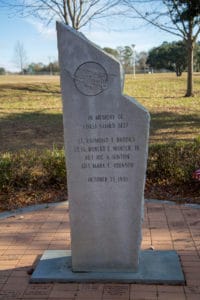Memorial Dedication Ceremony
Good afternoon Sector Humboldt Bay and welcome to the memorial service remembering the tragic loss of Coast Guard helicopter 1363 on December 22nd, 1964. For our guests, my name is CDR Olav Saboe and I am the Deputy Sector Commander here at Coast Guard Sector Humboldt Bay. I would like to welcome you as well and thank you for attending today’s memorial ceremony. I would like to publically thank Chaplain Andy Broese Von Groneau of the Humboldt County Sheriff’s Office, Mr. Roddy Ross and Mr. Michael McLimon for assisting with our ceremony today. I would also like to acknowledge a few of our guests who were loved ones or friends of the military and civilian members we are here to recognize today. Those include Captain (retired) Larry McQuarrie and Captain (retired) Finlay Sterling of the Royal Canadian Navy, Lieutenant Commander (USCG retired) Dick Norat, Jerry Hansen, son of Arnold “Bud” Hansen, and his family, and all of the relatives of the Kempfs and Marie Bahnsen. Thank you for reflecting with us upon the heroism of the lost crewmembers and the incredible sacrifices of their family members.
50 years ago this December and 13 years before an Air Station was stood up here in McKinleyville, the “storm of the century” ravaged northern California. The Eel River was well above flood stage, towns and communities were being swept away and local emergency services were overwhelmed. The Humboldt County Sheriff requested assistance from Coast Guard Air Station San Francisco to evacuate 16 persons stranded on Cock Robin Island, and about to be engulfed by the rising flood waters. The Island, at the mouth of the Eel River south of Eureka was more than 200 miles north of San Francisco. That morning, an HH52A helicopter was airborne with Lieutenant Donald L. Prince of the CG as pilot; Sub-Lieutenant Allen Alltree, a Royal Canadian Navy exchange pilot as copilot; and James A. Nininger, Jr., an Aviation Electricians Mate second class, in the CG serving as crewman, the equivalent of today’s flight mechanic.
The helicopter arrived on scene at about 2:50 P.M local time and, in spite of rain, fog, and extremely high winds, commenced rescue operations. Late in the afternoon, after having rescued at least 20 people from the raging flood waters, the helicopter landed what would turn out to be its last five survivors at the Humboldt County Fairgrounds in Ferndale, California. Mr. Bud Hansen, a local dairy farmer, volunteered to assist the Coast Guard crew in finding more neighbors before darkness made the searching impossible. The helicopter departed in “terrific winds and heavy rainfall.” Now in darkness, they made three more rescues, hoisting Mrs. Marie Bahnsen, Mrs. Betty Kempf, and Betty’s baby daughter, Melanie.
Darkness had settled and fuel was getting low. The crew flew north toward the Arcata/Eureka Airport where they had fueled earlier in the afternoon. With low visibility the crew was forced to fly offshore. As a result of power failures from storm damage airport lighting was inoperative. The crew realized they had missed the airport when they picked up a radio bearing north of Trinidad. In turning back to the south, the extremely high winds pushed them inland where they subsequently impacted terrain at 1200 feet above sea level, coming to rest in a stand of Redwood trees. Due to the terrible weather conditions and remote location, it took rescuers five days to locate and hike to the wreckage site. The helicopter was completely demolished and all on board deceased. The medical experts reported that death for all had been instantaneous.
Donald Prince who was posthumously promoted to Lieutenant Commander was the aircraft commander. He left behind his wife Dorothy and two children. He graduated from the Coast Guard Academy in 1956. Just two days prior to the fateful event, he and his family had enjoyed a wardroom eggnog party and were in the throes of preparing for Christmas. He was preparing to come off duty that very morning.
Sub Lt. Allen Alltree was part of a pilot exchange program with the Royal Canadian Navy and had been assigned to Coast Guard Air Station San Francisco shortly after graduating from flight school in 1964. He was born in Sidney, Australia to his Canadian mother in 1940 but moved to Canada in 1942.
AE2 James A. Nininger, Jr. was living with his wife and son, David, in San Mateo, CA. Hailing from Virginia, he was a welcome face on the hangar deck and volunteered to launch as part of the crew of 1363.
Mr. Arnold “Bud” Hansen was a local dairy farmer. He volunteered and joined the crew after they helped evacuate 10 victims off Cock Robin Island. Parts of Ferndale had become completely inundated with water, with residents clinging to rooftops for survival. “Bud” had extensive knowledge of the area and was critical to helping locate at least six other flood victims.
The flight crew received AIR MEDALS posthumously for meritorious achievement in aerial flight. In October 1998, Mr. Bud Hansen was awarded the MERITORIOUS PUBLIC SERVICE AWARD posthumously for his selfless act of heroism, in putting his neighbor’s well-being and safety above that of his own.
This crew personified the Coast Guard humanitarian values. They believed whole-heartedly in putting the lives of others above their own. According to those that served with all three of them, they were the kind of men that would have continuously found a way to help rescue survivors, even if the helicopter experienced discrepancies mid-rescue.
If these crewmembers were here today, they would be some of our closest friends. Like you, they conducted daily training flights, attended wet drills and sat through safety stand downs. They got together for Christmas parties and celebrated CG Day in August, they played card games and talked about their hobbies on duty nights and deployed aboard CG cutters.
Members of Sector Humboldt Bay, this aircrew was just like you and I. We are merely separated by time and circumstances. Their mishap has taught us to evaluate risk and gain with a deeper understanding of our limitations as an organization and our vulnerability as a crew.
In reflection, the American people and the United States Coast Guard are forever indebted to these crewmembers and their families. They gave the ultimate sacrifice in the line of duty and each lived by the CG Ethos: I am a Coast Guardsmen. I serve the people of the United States. I will protect them. I will defend them. I will save them. I am their shield. For them I am Semper Paratus.
Let us leave here today remembering each of these professional life savers and let this accident be a stark reminder of the dangerous conditions in which we operate.




